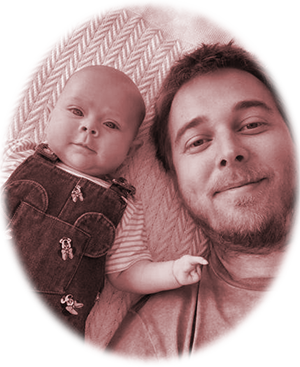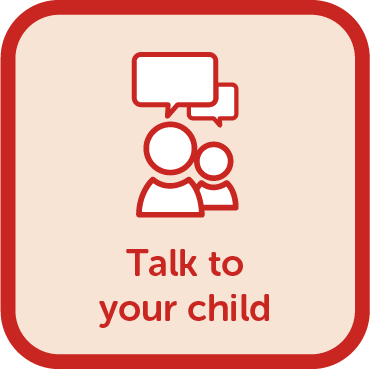TELLING OTHERS
You are probably wondering what is the best way and when is the right time to share the news of your baby’s hand difference with your family, friends and acquaintances. You might like to tell close family and friends first, people you know who will support you unconditionally.
This is an entirely personal decision. Many parents find that they need time to process their own feelings before they tell others. Take your time and do not feel the pressure to stick to a specific timeline.

Hear From Experts
Before telling family and friends about your child’s hand difference, medical experts suggest working through your emotions and do as much research as possible. Feelings of anxiety, fear, embarrassment, guilt, anger, disappointment and confusion are common.
Dr Katherine Olsson, Clinical Psychologist and Clinical Neuropsychologist from the Queensland Paediatric Rehabilitation Service says:
‘You might feel worried or anxious about what questions others ask, particularly around the question of “why did this happen?” This can be anxiety provoking.’
Social Worker from the Queensland Paediatric Rehabilitation Service David Weatherburn recommends sharing just what you feel comfortable with.
‘How much to disclose is completely up to you. People will ask questions so it’s good to be prepared for that and being prepared can help you gain a sense of control over those situations.’
Psychologist Di Rachinger provides some helpful suggestions:
‘People will take their cues from you, so how you talk about your child’s hand difference will guide them. Try to avoid negative talk. Instead of saying: “Unfortunately he doesn’t have all his fingers.”
Say: “You’ll notice he has a hand difference – 3 fingers on this left hand. We don’t know why but hand differences are quite common in Australia.
It was quite a shock for us at first but we’re ok with it now. We have done some research and met other parents of kids with a hand difference and know that he will be OK.”
Di says it can be helpful to encourage people to ask questions, but some people are not good with difficult issues or emotions. So, if you do get a response that is hurtful or dismissive, try to stay calm and keep in mind that you have had time to absorb the news whereas the information is still new to them.
Forgive clumsiness and bear in mind that children can often speak very directly but often this is just natural curiosity. Hopefully, friends and family will be supportive and the more you can involve them, the more comfortable they will be.

Hear From Aussie Hands Parents
Aussie Hands parents share how they went about telling others, normalising the situation and dealing with questions and stares about their baby’s hand difference.
Private vs social media announcement
While you may choose to announce your baby’s hand difference privately over video or phone calls or group email messages, some Aussie Hands families have shared the news of their baby’s hand difference with the world in an up-beat and positive way on social media. Here are some examples:
Mawter family announcing the arrival of Amelia
‘Welcome earth side little Amelia. Born 29/12/20 at 06.59hrs weighing in at a healthy 3.26kg.
Our little warrior child is happy and beautiful. She has surprised us by being born with only one hand (which was quite a shock for us both as you could imagine) but nothing her two mums can’t handle, especially with one being a physio!
I have a sneaky feeling that she will be just as strong and determined as her mummies are and she will smash down barriers with both bravery and grace. We are absolutely smitten and so blessed she chose us as her parents.
We are the Mawter Mob and we got this.’
Tegan introducing Louis to the Aussie Hands community
‘Our beautiful 2-week-old little man – Louis Remy Orion.
At our 12 week scan we were told our boy’s left hand was absent because of an amniotic band.
We’ve had much time to process it and to find available supports, for both him and us, at each stage of his development.
Now we are at peace and are so in love with every part of our boy. I told my husband I secretly love him more because his hand is the way it is. Thanks to this Aussie Hands group and the Lucky Fin Project for helping us normalise things and showing us just how full of a life our boy can and will be.’
Sharing our stories
Claire’s mum Danielle recalls their first Aussie Hands event
‘I remember a very emotional but happy moment at our first Aussie Hands picnic when Claire was about 3 years old. This was the first time Claire had met someone else with a hand difference and the memory of her face lighting up when she realised there were other people like her, still brings tears to my eyes.’
Danielle encourages parents to meet other families in a similar situation: ‘Connecting with other people who understand the emotions you go through, particularly in the first few years, is such a great support.’
Dealing with questions and unwelcome attention
The experience of Aussie Hands parents shows that it’s highly likely people will notice that your child has a hand difference and be curious. While some will be kind and considerate in their reactions others may not know how to react and as children tend not to hold back when it comes to asking questions.
One recommendation is for you and your child to get out and about in the community. Children with hand differences thrive when exposed to lots of different social situations, just like any other child.
Another thing you can do is to have a script ready for when strangers ask about your child’s hand difference. Having a supportive friend or family member come along to the first few parents’ group or play group meetings can also be really helpful.
These are some suggestions from Aussie Hands parents:
‘That’s the way she was born. She can still do the things you can, just differently.’
‘He can do things that you can do in his own way.’
‘She was just born like this, it’s pretty unique, she can do everything.’
‘We don’t know, we are still figuring it all out.’
Experts recommend that as your child gets older, it’s important to skill them up to answer questions themselves and set their own boundaries about their hand difference. Some children, when asked, will respond with: ‘I was born this way.’ That is often enough for the child who is asking and within seconds they are back to the important task of playing. These children have usually seen their parents modelling a calm, confident attitude, which helps them respond to questions like it’s no big deal.
Connecting with older children and adults who have hand differences who are leading happy and successful lives is important for both children and parents.
If you are feeling overwhelmed, experts recommend speaking with a counsellor or psychologist who can support you in navigating through the experience.
Talk To Your Child About Their Hand Difference
Here are some suggestions, from workshops we held with Aussie Hands parents, about how to talk to your child about their hand difference.
‘Language is really important. It’s good to decide early on what language you’re going to use. While we use hand difference for adults, we interchange between lucky fin and superhero hand when talking to Emily.
For younger children, referring to their hand as a superhero hand may not be relevant yet, but you can read Nemo books and show short videos of Nemo even to a one year old or younger. When we read to Emily we would emphasise Nemo’s abilities saying:’ Look Nemo’s got a lucky fin just like you. Isn’t that great. Look at all the things that Nemo can do!’
‘We will use children’s books as a way to explain the hand difference to Amelia as she grows up and to teachers and peers when she starts childcare.’
‘There were incidents when other kids grabbed our son’s hand to have a look, so we introduced boundaries and told Leonard that it’s OK if he doesn’t want to show his hand.’
‘We followed a strength focused approach with our daughter and focused on what she can do.’
‘Normalise your child’s hand difference and don’t treat them differently unless they indicate that they need assistance. Foster the attitude that everyone has something in their lives that they are dealing with. Encourage your child to be confident and be themselves so that others will accept them quicker.’







